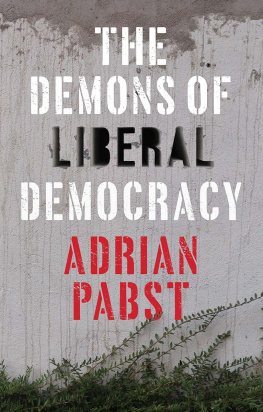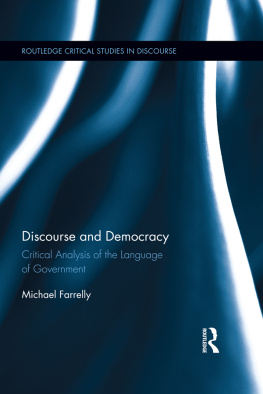Mathilde Fasting - The Norwegian Exception? Norways Liberal Democracy since 1814
Here you can read online Mathilde Fasting - The Norwegian Exception? Norways Liberal Democracy since 1814 full text of the book (entire story) in english for free. Download pdf and epub, get meaning, cover and reviews about this ebook. year: 2021, publisher: C. Hurst & Co., genre: Politics. Description of the work, (preface) as well as reviews are available. Best literature library LitArk.com created for fans of good reading and offers a wide selection of genres:
Romance novel
Science fiction
Adventure
Detective
Science
History
Home and family
Prose
Art
Politics
Computer
Non-fiction
Religion
Business
Children
Humor
Choose a favorite category and find really read worthwhile books. Enjoy immersion in the world of imagination, feel the emotions of the characters or learn something new for yourself, make an fascinating discovery.
- Book:The Norwegian Exception? Norways Liberal Democracy since 1814
- Author:
- Publisher:C. Hurst & Co.
- Genre:
- Year:2021
- Rating:4 / 5
- Favourites:Add to favourites
- Your mark:
- 80
- 1
- 2
- 3
- 4
- 5
The Norwegian Exception? Norways Liberal Democracy since 1814: summary, description and annotation
We offer to read an annotation, description, summary or preface (depends on what the author of the book "The Norwegian Exception? Norways Liberal Democracy since 1814" wrote himself). If you haven't found the necessary information about the book — write in the comments, we will try to find it.
The Norwegian Exception? Norways Liberal Democracy since 1814 — read online for free the complete book (whole text) full work
Below is the text of the book, divided by pages. System saving the place of the last page read, allows you to conveniently read the book "The Norwegian Exception? Norways Liberal Democracy since 1814" online for free, without having to search again every time where you left off. Put a bookmark, and you can go to the page where you finished reading at any time.
Font size:
Interval:
Bookmark:

MATHILDE FASTING
YSTEIN SRENSEN
Norways Liberal Democracy Since 1814

HURST & COMPANY, LONDON
First published in the United Kingdom in 2021 by
C. Hurst & Co. (Publishers) Ltd.,
83 Torbay Road, London, NW6 7DT
Mathilde Fasting and ystein Srensen, 2021
All rights reserved.
Printed in the United Kingdom
The right of Mathilde Fasting and ystein Srensen to be identified as the authors of this publication is asserted by them in accordance with the Copyright, Designs and Patents Act, 1988.
Distributed in the United States, Canada and Latin America by Oxford University Press, 198 Madison Avenue, New York, NY 10016, United States of America.
A Cataloguing-in-Publication data record for this book is available from the British Library.
This book is printed using paper from registered sustainable and managed sources.
ISBN: 9781787385603
www.hurstpublishers.com
PART ONE
FORMING A NATION, 18141905
PART TWO
MODERNITY, 190570
PART THREE
STILL AN EXCEPTION? THE 1970s TO THE PRESENT
Norway is among the richest, happiest and best functioning liberal democracies in the world. Is there anything exceptional in Norways development through the last 200 years or so, compared to other relatively small Western European democratic countries? Has Norway been blessed with exceptional luck? Have Norwegians done something extraordinary that other Western democracies have not been able to do, and if so, what? In this book we explore how Norwegian society developed from a province in a large, composite multi-ethnic state, governed from Copenhagena small underdogto an independent and economically strong nation.
The traditional explanation for the name Norway (Norge) has been the road towards north, or the Northern land. However, recent explanations contest this, suggesting instead that nor means a strait, inlet or a waterway or fjord, also found in the English narrow, which then means that Norway is the road along narrow inlets. Geographically, the borders of Norway have been relatively stable throughout history, and the idea of a unified Norway has existed since the early Middle Ages. Certainly, Norwegians have always thought of themselves as a folk excluding the lands Sami people, Swedes and Danes.
In the Viking Agefrom the arrival of Norwegian Vikings at Lindisfarne in 793 CE, until the failed Norwegian invasion of England in 1066Norwegians expanded mostly westwards across the North Sea and Northern Atlantic. In the eighth and ninth centuries, there were several regional Viking kingdoms in Norway. The story goes that in around 870 CE the first King Harald promised his future wife that he would not cut his hair until Norway was unified, even if this unification likely wouldnt include the whole of Norway. He cut his hair and became known as King Harald Fairhair, and throughout the late Middle Ages Norway became an important Northern European power, with several strong kings and North Sea colonies including Iceland, Greenland, Shetland and the Faroe Islands. King Magnus Lagabterthe lawmakerinstitutionalized a strong rule of law and private property in the 1270s, building on the oldest Nordic law from the Gulating legislative assembly in Western Norway. In the Viking Age and medieval times, free Norwegian men regularly met at the ting: bargaining, compromising, solving conflicts and making laws.
From the early fourteenth century, Norway became involved in dynastic and political unions with her neighbours Sweden and Denmark. Especially after the Black Death in the mid-fourteenth century, the Norwegian economy, aristocracy and political institutions declined rapidly. Thought to have wiped out around a third of the population, the plague drastically reduced Norways political and religious capacity; one bishop and two lagmenn (judges) remained, while the chancellor was the only surviving member of his council. This left Norway vulnerable politically, and from the 1530s Norway was both de facto and de jure ruled by Denmark.
Our story begins with the end of the absolutist dual kingdom of Denmark-Norway and Norways emergence as a separate polity. Since the Danish-dominated monarchy had become involved in the Napoleonic Wars on the side of the vanquished French, Denmark was forced to cede Norway to Sweden in January 1814. A Norwegian insurrection against this treaty after the Napoleonic Wars, led by Christian Frederikthe Danish heir to the throne and Governor-General in Norwayended in the proclamation of a new Norwegian state with a liberal, monarchical constitution. The new Norwegian kingdom was forced later in 1814 to accept a union with Sweden, but this was a loose alliance and Norway kept its own Constitution and political autonomy. The political system established in 1814 was not strictly a democracy, as it is not possible to talk about democracy in a modern sense before universal suffrage was introduced in 1898 for men and in 1913 for women. Yet Norways journey to liberal democracy began in 1814, and as this book will show, these roots are still evident in Norwegian culture, society, politics and economics. The union was dissolved peacefully in 1905, and by this time Norway had transformed into an industrialized, capitalist society with a parliamentary democracy; during the twentieth century, the welfare state became substantial. Norway was neutral under the First World War and occupied during the Second World War, and oil was first discovered in the North Sea in 1969, making the country one of the richest in the world. At the time of writing, Norway is the only Scandinavian country that is not a member of the European Union. In 200 years, Norway went from being a country dominated first by Denmark, and then by Sweden, to becoming the richest of the three.
The national myth is that Norwegians were few and poor, heroically fighting their way to independence, democracy and prosperity. Foreign countries wished to dominate the Norwegians and strong forces had to be defeated. First, our ancestors managed to free themselves from Denmark and secure a liberal constitution, then Norway seceded from the union with Sweden almost 100 years later. The country was occupied by the Nazis during the Second World War but endured this as well.
All in all, Norwegians have struggled and succeeded. The Norwegian national anthem builds heavily on this myth, as is clear from the last two verses:
Norwegian man in house and cabin,
thank your great God!
The country he wanted to protect,
although things looked dark.
All the fights fathers have fought,
and the mothers have wept,
the Lord has quietly moved
so we won our rights.
Yes, we love this country
as it rises forth,
rugged, weathered, above the sea,
with those thousand homes.
And as the fathers struggle has raised
it from need to victory,
even we, when it is demanded,
for its peace will encamp (for defence).
The anthem remains important and is often sung all over Norway, especially on the national Constitution Day (17 May). The Norwegian self-image is that of a humanitarian power, a peace negotiator, an advocate for global climate change, and a role model for democracy and social justice worldwide. Norway is the host of the Nobel Peace Prize, and covets foreigners who praise the country, immediately branding them
Font size:
Interval:
Bookmark:
Similar books «The Norwegian Exception? Norways Liberal Democracy since 1814»
Look at similar books to The Norwegian Exception? Norways Liberal Democracy since 1814. We have selected literature similar in name and meaning in the hope of providing readers with more options to find new, interesting, not yet read works.
Discussion, reviews of the book The Norwegian Exception? Norways Liberal Democracy since 1814 and just readers' own opinions. Leave your comments, write what you think about the work, its meaning or the main characters. Specify what exactly you liked and what you didn't like, and why you think so.



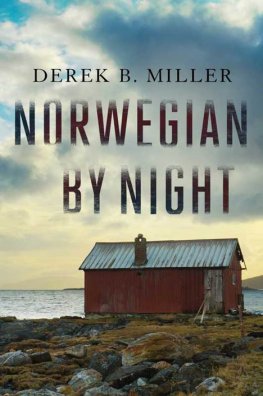
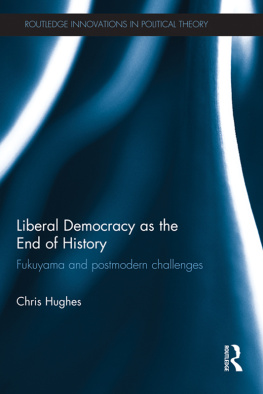
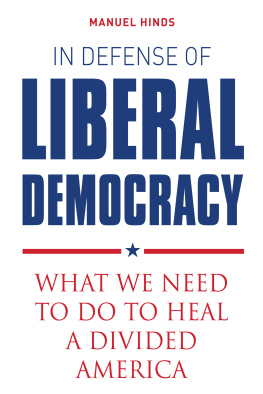
![MATHILDE Fibiger - Et Besøg. Nye Breve af Forfatterinden til Clara Raphael (Mathilde [Fibiger])](/uploads/posts/book/218524/thumbs/mathilde-fibiger-et-bes-g-nye-breve-af.jpg)
